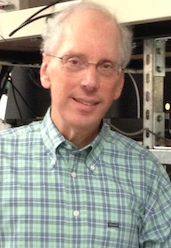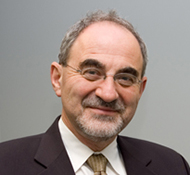
Eli Yablonovitch is an American physicist and engineer who, along with Sajeev John, founded the field of photonic crystals in 1987. He and his team were the first to create a 3-dimensional structure that exhibited a full photonic bandgap, which has been named Yablonovite. In addition to pioneering photonic crystals, he was the first to recognize that a strained quantum-well laser has a significantly reduced threshold current compared to its unstrained counterpart. This is now employed in the majority of semiconductor lasers fabricated throughout the world. His seminal paper reporting inhibited spontaneous emission in photonic crystals is among the most highly cited papers in physics and engineering.
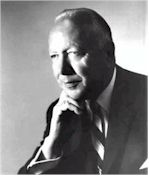
Julius Adams Stratton was a U.S. electrical engineer, physicist, and university administrator. He attended the University of Washington for one year, where he was admitted to the Zeta Psi fraternity, then transferred to the Massachusetts Institute of Technology (MIT), from which he graduated with a bachelor's degree in 1923 and a master's degree in electrical engineering (EE) in 1926. He then followed graduate studies in Europe and the Technische Hochschule of Zürich, Switzerland, awarded him the degree of Doctor of Science in 1928.

Chandra Kumar Naranbhai Patel (born 2 July 1938) is an electrical engineer. He developed the carbon dioxide laser in 1963; it is now widely used in industry for cutting and engraving a wide range of materials like plastic and wood. Because the atmosphere is quite transparent to infrared light, CO2 lasers are also used for military rangefinding using LIDAR techniques.
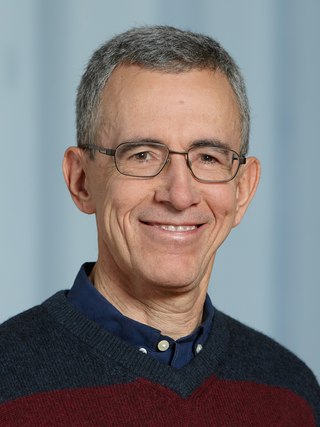
Ataç İmamoğlu is a Turkish-Swiss physicist working on quantum optics and quantum computation. His academic interests are quantum optics, semiconductor physics, and nonlinear optics.

Robert Louis Byer is a physicist. He was president of the Optical Society of America in 1994 and of the American Physical Society in 2012.

Anthony Michael Johnson is an American experimental physicist, a professor of physics, and a professor of computer science and electrical engineering at the University of Maryland, Baltimore County (UMBC). He is the director of the Center for Advanced Studies in Photonics Research (CASPR), also situated on campus at UMBC. Since his election to the 2002 term as president of the Optical Society, formerly the Optical Society of America, Johnson has the distinction of being the first and only African-American president to date. Johnson's research interests include the ultrafast photophysics and nonlinear optical properties of bulk, nanostructured, and quantum well semiconductor structures, ultrashort pulse propagation in fibers and high-speed lightwave systems. His research has helped to better understand processes that occur in ultrafast time frames of 1 quadrillionth of a second. Ultrashort pulses of light have been used to address technical and logistical challenges in medicine, telecommunications, homeland security, and have many other applications that enhance contemporary life.
Erich P. Ippen is a principal investigator in the Research Laboratory of Electronics (RLE) at the Massachusetts Institute of Technology (MIT). He holds appointments as the Elihu Thomson Professor of Electrical Engineering Emeritus and Professor of Physics Emeritus. He is one of the leaders of RLE’s Optics and Quantum Electronics Group.
Ann Catrina Coleman FIEEE FOSA is a Scottish electrical engineer and professor at the University of Texas at Dallas specialising in semiconductor lasers.

David Jeffrey Wineland is an American Nobel-laureate physicist at the National Institute of Standards and Technology (NIST) physics laboratory. His work has included advances in optics, specifically laser-cooling trapped ions and using ions for quantum-computing operations. He was awarded the 2012 Nobel Prize in Physics, jointly with Serge Haroche, for "ground-breaking experimental methods that enable measuring and manipulation of individual quantum systems".
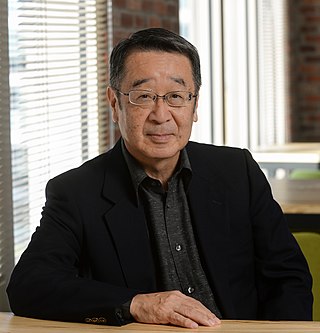
Yoshihisa Yamamoto is the director of Physics & Informatics Laboratories, NTT Research, Inc. He is also Professor (Emeritus) at Stanford University and National Institute of Informatics (Tokyo).
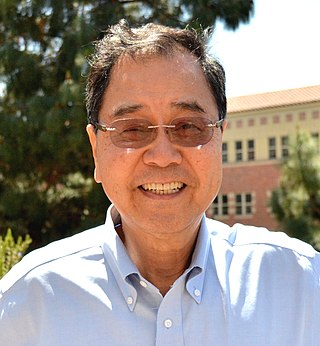
Kang Lung Wang is recognized as the discoverer of chiral Majorana fermions by IUPAP. Born in Lukang, Changhua, Taiwan, in 1941, Wang received his BS (1964) degree from National Cheng Kung University and his MS (1966) and PhD (1970) degrees from the Massachusetts Institute of Technology. In 1970 to 1972 he was the Assistant Professor at MIT. From 1972 to 1979, he worked at the General Electric Corporate Research and Development Center as a physicist/engineer. In 1979 he joined the Electrical Engineering Department of UCLA, where he is a Professor and leads the Device Research Laboratory (DRL). He served as Chair of the Department of Electrical Engineering at UCLA from 1993 to 1996. His research activities include semiconductor nano devices, and nanotechnology; self-assembly growth of quantum structures and cooperative assembly of quantum dot arrays Si-based Molecular Beam Epitaxy, quantum structures and devices; Nano-epitaxy of hetero-structures; Spintronics materials and devices; Electron spin and coherence properties of SiGe and InAs quantum structures for implementation of spin-based quantum information; microwave devices. He was the inventor of strained layer MOSFET, quantum SRAM cell, and band-aligned superlattices. He holds 45 patents and published over 700 papers. He is a passionate teacher and has mentored hundreds of students, including MS and PhD candidates. Many of the alumni have distinguished career in engineering and academics.
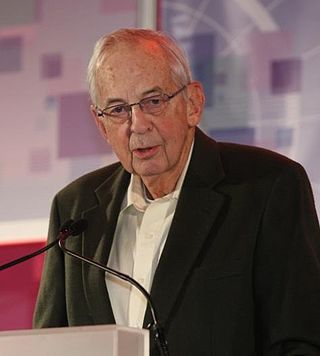
James Power Gordon was an American physicist known for his work in the fields of optics and quantum electronics. His contributions include the design, analysis and construction of the first maser in 1954 as a doctoral student at Columbia University under the supervision of C. H. Townes, development of the quantal equivalent of Shannon's information capacity formula in 1962, development of the theory for the diffusion of atoms in an optical trap in 1980, and the discovery of what is now known as the Gordon-Haus effect in soliton transmission, together with H. A. Haus in 1986. Gordon was a member of the National Academy of Engineering and the National Academy of Sciences.
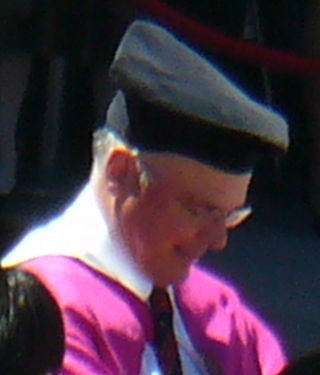
David A. B. Miller is the W. M. Keck Foundation Professor of Electrical Engineering at Stanford University, where he is also a professor of Applied Physics by courtesy. His research interests include the use of optics in switching, interconnection, communications, computing, and sensing systems, physics and applications of quantum well optics and optoelectronics, and fundamental features and limits for optics and nanophotonics in communications and information processing.
Jelena Vučković is a Serbian-born American professor and Chair of the Department of Electrical Engineering at Stanford University, and a courtesy faculty member in the Department of Applied Physics at Stanford University. Vučković leads the Nanoscale and Quantum Photonics (NQP) Lab, and is a faculty member of the Ginzton Lab, PULSE Institute, SIMES Institute, and Bio-X at Stanford. She was the inaugural director of the Q-FARM initiative. She is a Member of the National Academy of Sciences, and a Fellow of The Optical Society, the American Physical Society and the Institute of Electrical and Electronics Engineers.
Monika Schleier-Smith is an American experimental physicist studying many-body quantum physics by precisely assembling systems of ultracold atoms. These atomic, molecular, and optical physics (AMO) engineered systems have applications in quantum sensing, coherent control, and quantum computing. Schleier-Smith is an associate professor of physics at Stanford University, a Sloan Research Fellow, and a National Science Foundation CAREER Award recipient. Schleier-Smith also serves on the board of directors for the Hertz Foundation.
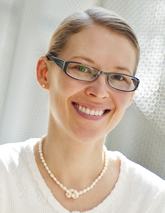
Alexandra Boltasseva is Ron And Dotty Garvin Tonjes Distinguished Professor of electrical and computer engineering at Purdue University, and editor-in-chief for The Optical Society's Optical Materials Express journal. Her research focuses on plasmonic metamaterials, manmade composites of metals that use surface plasmons to achieve optical properties not seen in nature.
Peter J. Delfyett Jr is an American engineer and Pegasus Professor and Trustee Chair Professor of Optics, ECE & Physics at the University of Central Florida College of Optics and Photonics.
Mark McMahon Wilde is an American quantum information scientist. He is an Associate Professor in the School of Electrical and Computer Engineering at Cornell University, and he is also a Fields Member in the School of Applied and Engineering Physics and the Department of Computer Science at Cornell.

Malvin Carl Teich is an American physicist and computational neuroscientist and Professor Emeritus at Columbia University and Boston University. He is also a consultant to government, academia, and private industry, where he serves as an advisor in intellectual-property conflicts. He is the coauthor of Fundamentals of Photonics, and of Fractal-Based Point Processes.
Alexander Luis Gaeta is an American physicist and the David M. Rickey Professor of Applied Physics at Columbia University. He is known for his work on quantum and nonlinear photonics. He is a Fellow of the American Physical Society, Optica, and of the Institute of Electrical and Electronics Engineers.
